Energy Storage System AFCS Auxiliary Frequency Control System
Release Date:
2025-08-15
Auxiliary Frequency Control System (AFCS) Based on Battery Energy Storage System (BESS) and SATEC Meters Supporting IEC61850 Protocol
Battery Energy Storage Systems (BESS) are becoming an important part of modern power grids. These systems are often combined with on-site renewable energy sources to store energy during peak generation or low demand periods and release stored energy during peak demand. Taiwan Power Company (TPC) designed a BESS applied to a substation to balance the local distribution network supply. This effect is achieved by using the BESS to compensate for frequency deviations, as frequency deviations also indicate sudden rises or drops in power supply. In this case, the BESS is housed in containers (as shown in Figure 1), with capacities ranging from 1MW to 2MW.
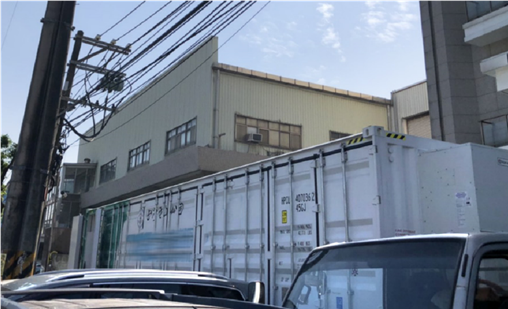
Figure 1: Typical System Storage
TPC's Requirements for Frequency Stability
TPC's regulation for this power ancillary service is: the monitoring system must poll the grid frequency ten times per second (or more), and the polling data will be communicated via the IEC 61850 protocol, which has become TPC's standard communication platform. The acceptable frequency range is set between 59.98 - 60.02Hz, known as the dead band.
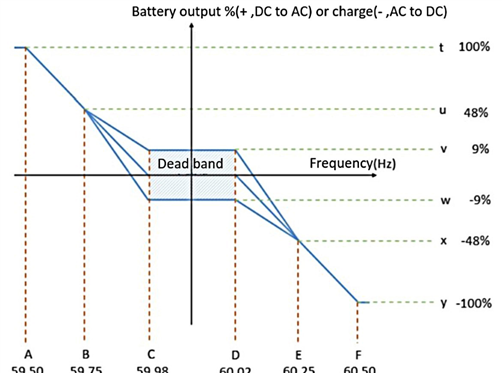
Figure 2: BESS System Capacity vs. Frequency Deviation (Hz)
Battery Energy Storage System (BESS) as a Stabilizing System
When the frequency falls below 59.98Hz, it indicates a slight power shortage, and the AFCS system intervenes, using the BESS to enhance the substation's power supply. Within the frequency range of 59.98 ~ 59.75Hz, the system introduces 9 ~ 48% of the BESS capacity (DC to AC). When the frequency drops below 59.50Hz, indicating a more severe power shortage, the BESS will provide 100% of its energy output (Figure 2). The specified capacity percentage ("setpoint", see Figure 4) must be fully responsive within one second. Conversely, when the frequency exceeds 60.02Hz, it indicates excess power generation, and energy is directed to charge the BESS system (AC to DC).
ICP is one of Taiwan's largest system integrators and frequently undertakes large projects for TPC. As experts in power systems and IEC61850 topology, ICP is committed to seeking the metering and control platform required to realize the BESS system's Auxiliary Frequency Control System (AFCS). After functional analysis and testing of corresponding products on the market, ICP found that SATEC's PRO PM335/EM235 series is the only product meeting the requirements. Currently, the PRO series has become the supporting product for the AFCS system. The same selection and application process for the SATEC PRO series has also occurred in BESS systems integrated by Siemens and in many countries including Australia, the UK, Israel, the USA, and Europe.
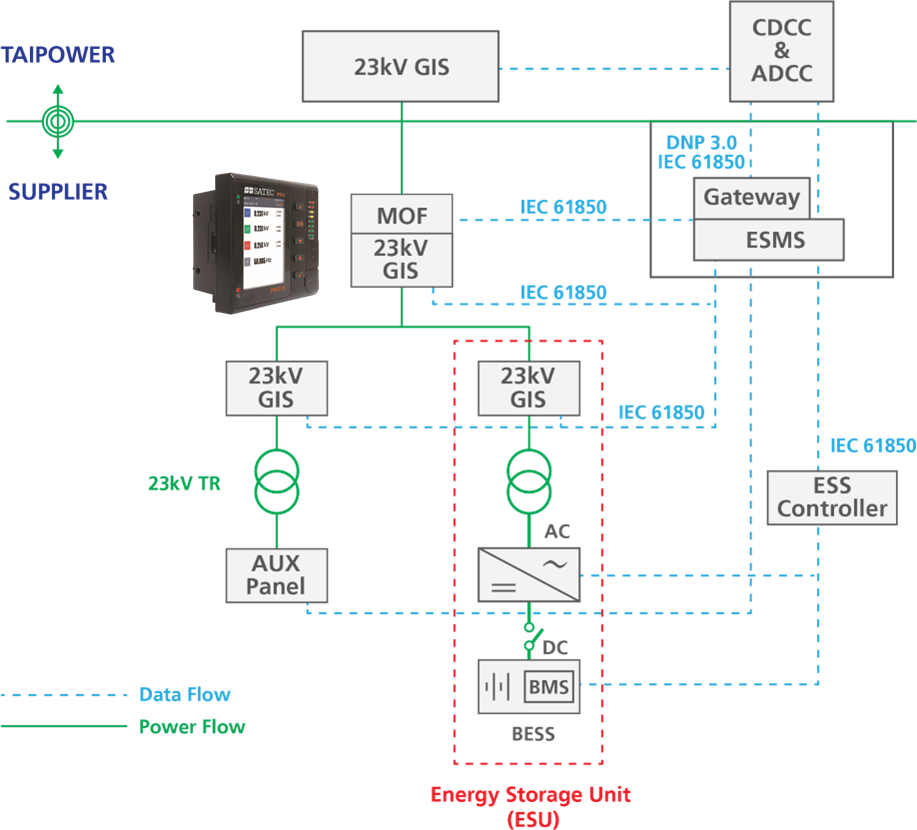
Figure 3: BESS System Application Scheme
Metering, Communication, and Control
The communication of substations implementing BESS is based on the IEC61850 topology. To meet the above requirements, ICP designed a solution based on SATEC's PRO PM335 meter. The PRO PM335's frequency accuracy can reach up to 0.001Hz (0.002%), sampling frequency every 20ms (PM335's sampling refresh can reach 10ms), and communicates the average of 4 samples every 100ms. According to system requirements, the accuracy exceeds the demand. SATEC created an IEC 61850 logical node to carry the above calculated values, which can be communicated via GOOSE Messaging.
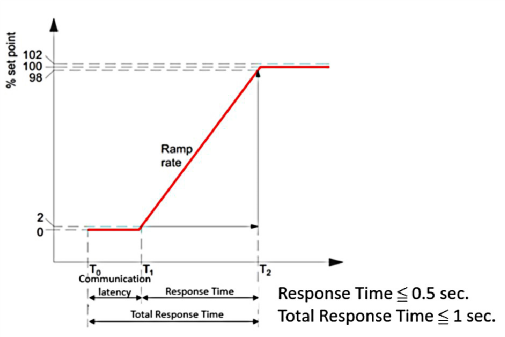
Figure 4: Response Time to Reach Specified System Capacity (setpoint) Response time better than 0.5s, full response time better than 1s
SATEC Devices Used
PRO Series - Advanced Multifunction Power Parameter Meter
- High accuracy: Frequency 0.002% (0.001Hz), active energy 0.2s; current and voltage 0.1%
- Standard RS485/dual Ethernet ports/USB communication, optional 4G communication, supports IEC61850, DNP3, IEC 60870-5-101/104, MODBUS RTU/TCP and other protocols;
- 10ms (half cycle) data refresh, 256 sampling points per cycle;
- Power quality Class A, 63 harmonic analysis, voltage sag and swell, unbalanced components, fault recording, load curve...
- Supports AC/DC measurement, ground current measurement;
- 64 setpoints with AND/OR logic, 16 configurable recorders for data, events, power quality, and waveform recording, 16G storage;
- Can be configured without a screen or with a color graphic display, showing not only data but also vector diagrams, waveforms, harmonic spectra, etc.;
- Intuitive independent display of load rate;
- Standard 2DI/1DO/1AI, up to 26DI/7DO/9AI/8AO
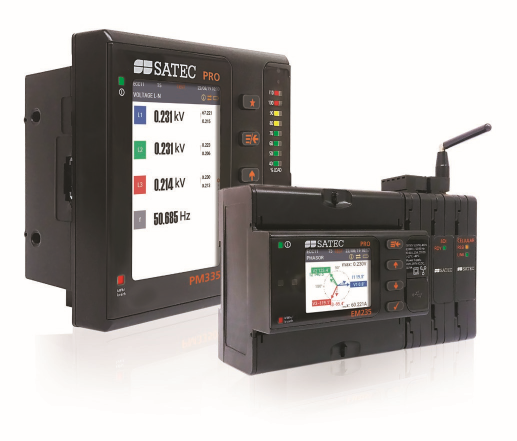
Figure: PM335: Panel Mount / EM235: Rail Mount
PM135/EM133 - Multifunction Power Parameter Meter
- High accuracy: Current/Voltage 0.2%; Frequency 0.02% (0.01Hz), active energy Class 0.5s (optional Class 0.2s);
- Standard RS485, optional second RS485/Ethernet/4G/Profibus/CAN communication, supports MODBUS RTU/TCP, DNP3, ASCII, IEC 60870-5-101/104, Profibus, CANopen and other protocols;
- 20ms (1 cycle) data refresh, 128 sampling points per cycle;
- Supports AC/DC measurement;
- 40 harmonic analysis, unbalanced components, load curve, 16 programmable settings
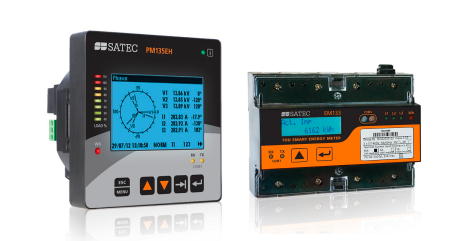
Figure: PM135: Panel Mount / EM133: Rail Mount
Keywords:

